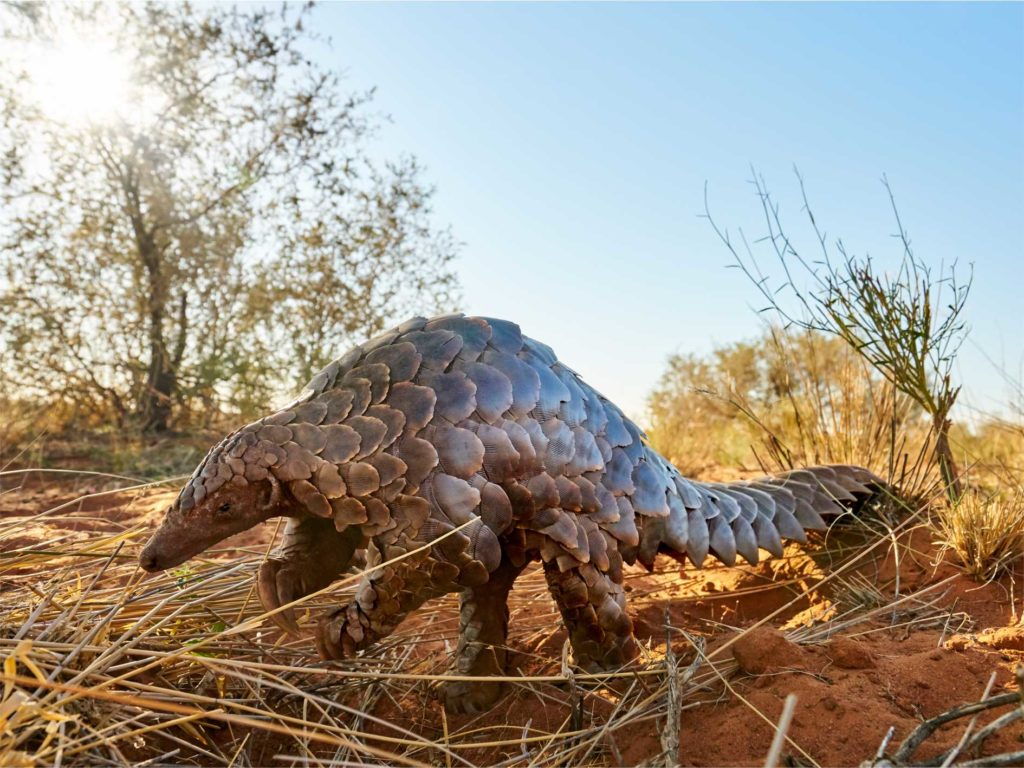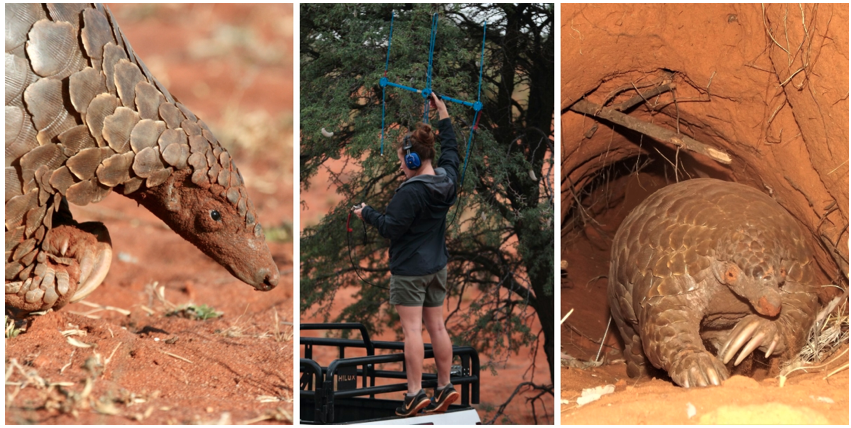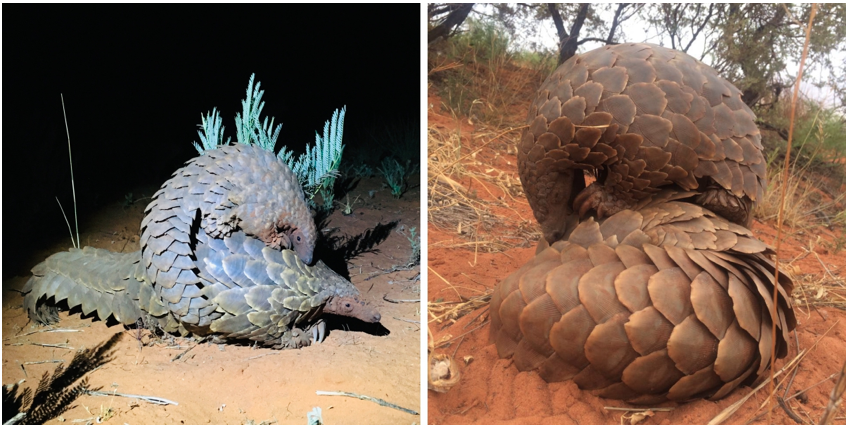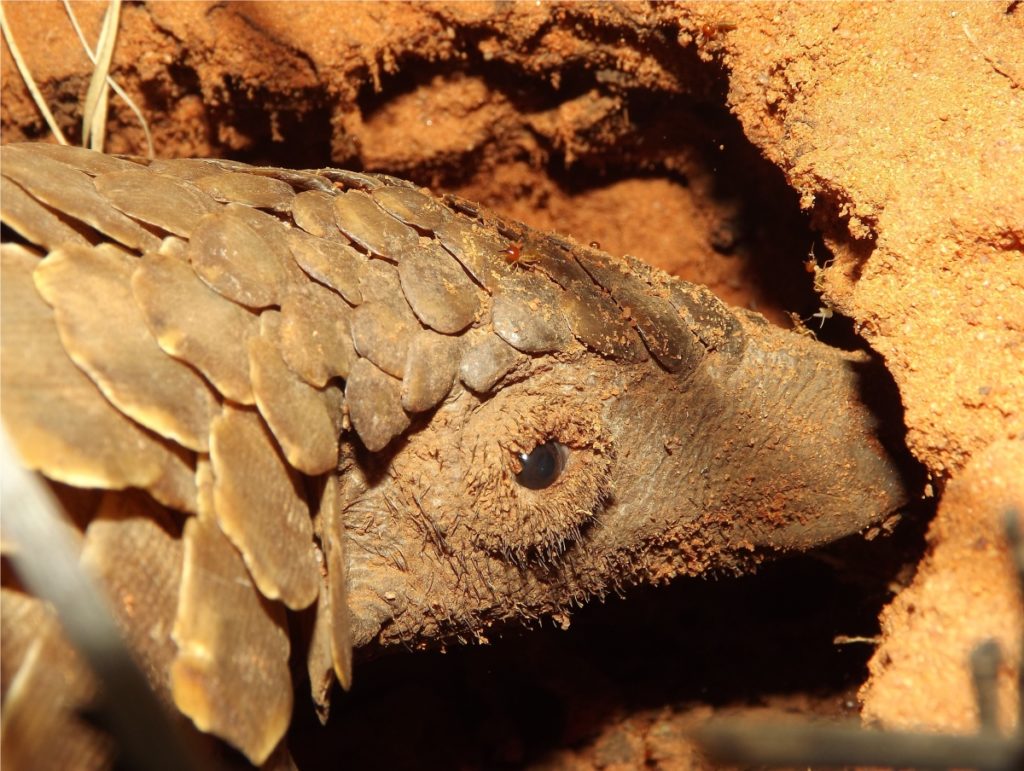
- Destinations
- Game Lodges
- Experiences
- Private Villas
- Hotels
- About Us
- Latest Specials
- Last Minute Deals
The Secret Life of Pangolins
- News
-
Apr 26
- Share post

Just over five years ago, in fulfilment of her PhD degree through the University of the Witwatersrand, Wendy Panaino embarked on a journey to study the responses of Temminck’s ground pangolins (Smutsia temminckii) to climate change in the Kalahari. Wendy could not have foreseen how she would be totally captured by these charismatic animals. The curious habits of pangolins fuelled Wendy’s passion for understanding nature and for seeking out the answers to questions about the ecology and biology of one of Tswalu Kalahari’s most iconic species, of which so little is known.
While pangolins are known to be threatened by the illegal wildlife trade, habitat loss, electrocution by electric fences and road mortalities, little attention has been focused on how climate change will affect their welfare. How do pangolins cope in the already dry and hot Kalahari environment? Will they cope with even hotter and drier conditions that are occurring with climate change in parts of Africa? And can the answers to these questions be applied to several other ecologically similar species around the world? These are some of the broader questions that Wendy sought to answer through her PhD, setting her pangolin research at Tswalu Kalahari apart from other pangolin research in Africa.


So how will pangolins deal with drying and warming in the Kalahari? Insights from Wendy’s research indicate that pangolins will not only be facing the direct effects of increasing environmental temperatures (through increased heat gain from their environment), but they also will be challenged through the indirect impacts of climate change on their primary food resources. Pangolins usually avoid the heat of the day as they are mainly active at night. However, to be active at night they need the energy from the food they eat to generate heat to keep themselves warm. Pangolins are incredibly fussy eaters, their highly specialised diet focused on specific ants and termites. The bad news for them is that drier and hotter conditions reduce the availability of those insects, and pangolins do not seem to be able to shift their diet to other possible food sources (as can bat-eared foxes for example). Pangolins that do not have enough food to keep themselves warm during the cold night can shift their activity to the warmer daytime, as is sometimes seen in winter, but climate change is resulting in those days becoming much hotter. Wendy’s findings showed that pangolins experience a rapid rise in body temperature when exposed to the heat of the day. Pangolins are therefore already walking a tightrope, trying to balance food intake with maintaining a normal body temperature. If our climate continues to warm and dry further, local extinctions and range contractions may be imminent.

While Wendy’s overall goal was to understand the intimate details of the pangolins diet, activity, and body temperature patterns, by studying their behaviour she also gained new insight into the daily lives of one of the world’s most secretive mammals.
Some exciting events that Wendy witnessed included adult female pangolins carrying their pups on their backs to transport them to their new burrows and two male pangolins coming together in what Wendy describes as a ‘dominance display’, a behaviour never recorded for the species previously.
After all these years of data collection and spending countless nights watching the pangolins of Tswalu, Wendy still feels that we are just barely scratching the surface when it comes to understanding these scaly anteaters. If we are to conserve any organism, we first need to understand it.
All images by Wendy Panaino, except for photograph of the author by Dylan Smith.